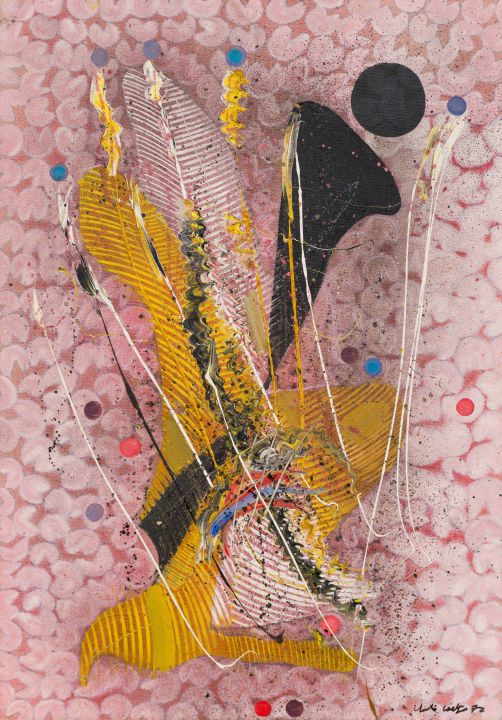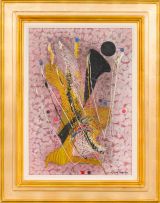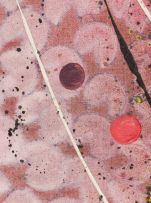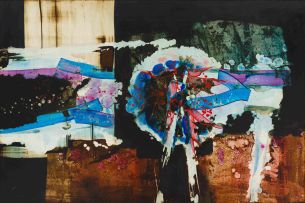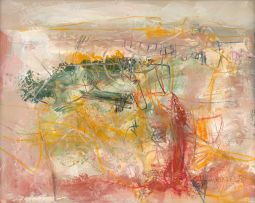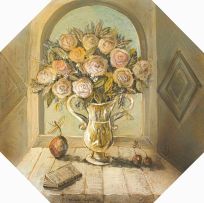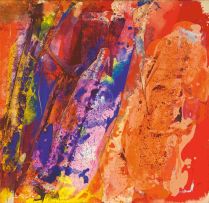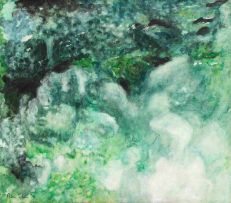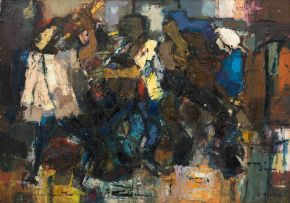Important South African and International Art
Live Auction, 12 November 2018
Evening Sale
Incl. Buyer's Premium & VAT
About this Item
signed and dated 72
Notes
Christo Coetzee fills the picture plane with numerous circular shapes. He then places tubular shapes in such a manner that they appear to be hovering in space, above the circles. Over these tube-like structures, Coetzee then applies vertical and diagonal lines in smooth sweeps, directly squeezed out of tubes of white, yellow and black oil paint. Although painted in 1972, the present lot is a veritable inventory of a number of Coetzee's previous and future stylistic developments. So, for example, the circles refer to a very prominent phase in his art, produced while he was in Paris, France, in the early 1960s after returning from a study period of nearly one year with the Gutai Art Association, a group of avant-garde, post-World War II artists in Japan. Coetzee imbues the circles, or what he refers to as Neo-Baroque orbs, with various symbolic meanings, such as perfection, boundless time, and enclosed space. The tubular shapes refer to a short period of his development, in the late 1960s and early 1970s, in which he created forms that bulge like balloons and turn in and onto themselves, attempting to destroy their own forms. One of the most interesting aspects of Abstract Composition, 1972, is the mass of parallel lines over the forms, which prefigure Coetzee's actual slashing of 23 of his paintings at the opening of an exhibition of his work in Cape Town in 1975. The past and the future are united, in a way, in this present lot.
Literature
Wilhelm van Rensburg (2018). The Safest Place is the Knife's Edge: Christo Coetzee (1929-2000), Johannesburg: Standard Bank Gallery, illustrated in colour on page 12.
